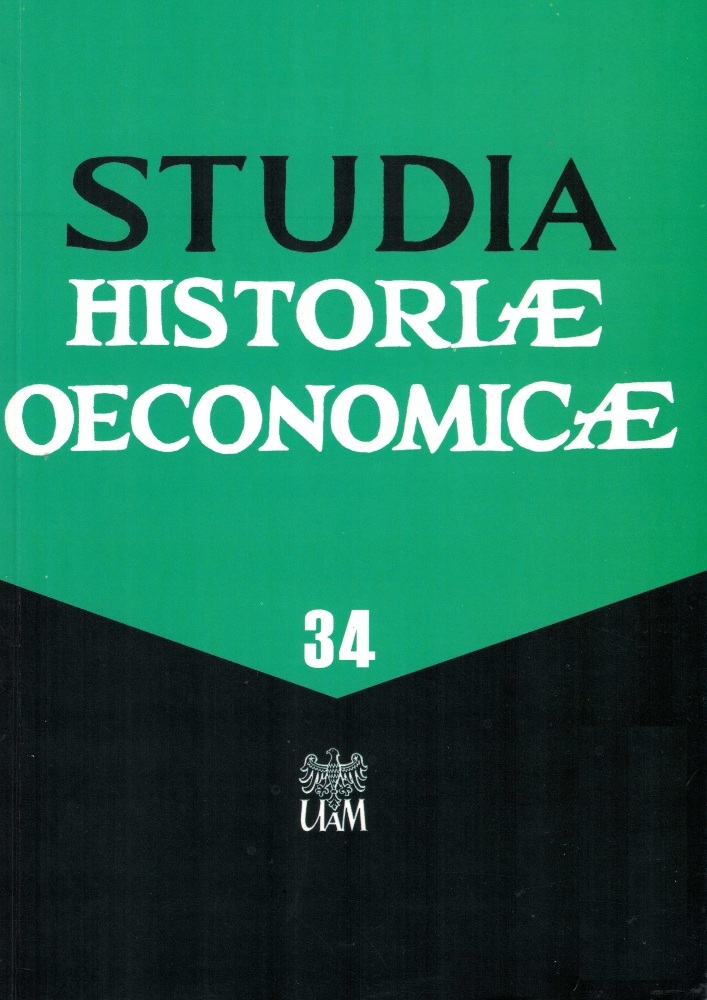Abstract
In socialist Poland, in the reality of centrally planned economy, average citizens experienced chronic deficits of basic commodities. Although the intensity of the problem varied, at no time could one say that the official market fully satisfied the demand for basic or luxurious goods sought by citizens. On the one hand, the market was steered manually, prices were set and kept on the same level for many years, and the volume of production and its cost was centrally planned, but on the other hand, salaries in national companies were raised, which resulted in unsatisfied demand for the goods that the official market lacked. How, then, did average citizens deal with these problems? How, by committing more or less serious financial crimes, did they become players in the black market game, the stake of which was satisfying their own needs? This article attempts at describing the situation in this specific market in various periods of socialist Poland. It also tries to demonstrate which products were the most desirable and most often sold in the black market. Most citizens of socialist Poland, knowing that their behavior is against the law, limited their participation in the black market to purchasing or selling the most urgently needed products.
References
Journal of Laws of the Republic of Poland – 1947, 1952.
Journal of Laws of the Polish People’s Republic – 1960, 1963.
Monitor Polski – 1970, 1976.
Statistical Yearbook 1969, Warsaw 1969.
The Archive of New Files (AAN) – Council of Ministers Office (URM), sign. 5/31, 5/252, The report of the Main Office for Fighting with Usury and War Speculation.
National Archive in Poznań (APP): Special Commission for Fighting with Fraud and Economic Abuse – Poznań branch.
APP – County government in Skwierzyna 1945-1950.
Dulczewski Z., Kwilecki A. (1962), Społeczeństwo wielkopolskie w osadnictwie Ziem Zachodnich [Greater Poland society in settling the western lands], Poznań.
Handke W., Miłosz J., Zwiernik P. (2007), Twarze poznańskiej bezpieki – katalog wystawy [The faces of Poznań Security Office – exhibition catalog], IPN Poznań, http://pamiec.pl/pa/biblioteka-cyfrowa/katalogi-wystaw/9858/Twarze-poznanskiej-bezpieki.html [access on: 24.09.2016].
Jarosz D. (2008), Polaków drogi do mieszkania w PRL (szkic problemu) [How Poles got flats in socialist Poland (outline of the problem)], lecture given in the Professor Anna Żarnowska seminar (September 2008), www.historiaspoleczna.uw.edu.pl/seminarium/miasto-przestrzen-i-ludzie/polakow_drogi_do_mieszkania_w_PRL [access on: 24.09.2016].
Jastrząb M. (2004), Manewr gospodarczy? Korekta polityki ekonomicznej na IX Plenum Komitetu Centralnego PZPR w 1953 r. [Economic maneuvers? Amendment of the economic policy in the 9th Plenary Session of the Polish United Workers’ Party Central Committee in 1953], “Przegląd Historyczny” 94/1, p. 48, http://bazhum.muzhp.pl/media//files/Przeglad_Historyczny/Przeglad_Historyczny-r2003-t94-n1/Przeglad_Historycznyr2003-t94-n1-s43-58/Przeglad_Historyczny-r2003-t94-n1-s43-58.pdf [access on: 17.09.2016].
Kochanowski J. (2015), Tylnymi drzwiami. „Czarny rynek” w Polsce 1944-1989 [Through the back door. Black market in Poland 1944-1989], Warsaw.
Madej K. (2008), Wszyscy byliśmy przemytnikami. Obraz przestępczości przemytniczej i dewizowej w latach 1956-1970 [We were all smugglers. Smuggling and currency-related crime in the years 1956-1970], [in:] “Pamięć i Sprawiedliwość” no. 7/2 (13), p. 121-140.
Miłosz J. (1995), Wstęp do inwentarza zespołu Komisja Specjalna do Walki z nadużyciami i Szkodnictwem Gospodarczym – Delegatura w Poznaniu, [Introduction to the inventory of the Special Commission for Fighting with Fraud and Economic Abuse team – Poznań branch], Poznań.
Pick D. (2003), Fenomen prywaciarza w PRL. Warszawa w latach 1956-1970, [The phenomenon of private business in socialist Poland. Warsaw in the years 1956-1970], Warsaw.
Porębski S. (2013), Walka o władzę na Śląsku Cieszyńskim w latach 1945-1947 [Fight for power in Cieszyn Silesia in the years 1945-1947], Katowice, http://www.sbc.org.pl/Content/96285/doktorat3444.pdf [access on: 17.09.2016].
Sobczak I. (1992), Obraz demograficzny województw nadmorskich Polski w latach 1946-1990, Wybrane liczby i tendencje rozwoju [Demographics in the Pomeranian regions of Poland in the years 1946-1990. Selected figures and development trends], Gdańsk.
Sowiński P. (2005), Wakacje w Polsce Ludowej. Polityka władz i ruch turystyczny (1945-1989) [Holidays in socialist Poland. Authorities’ policy and tourist movement (1945-1989)], Warsaw.
Szymańska K. (2009), Sklepy w czasach PRL [Shops in socialist Poland], Warszawa, http://wiedzaiedukacja.eu/wp-content/uploads/2009/05/karolina-szymanska-sklepy-w-prl.pdf, [access on: 21.09.2016].
Zaremba M. (2003), „Bigosowy socjalizm” Dekada Gierka, [Mixed socialism – Gierek’s decade] [in:] Miernik G. [ed.] Polacy w PRL. Strategie przystosowawcze [Poles in socialist Poland. Adaptive strategies], Kielce.
License
Copyright (c) 2021 Jan Miłosz

This work is licensed under a Creative Commons Attribution-ShareAlike 4.0 International License.





